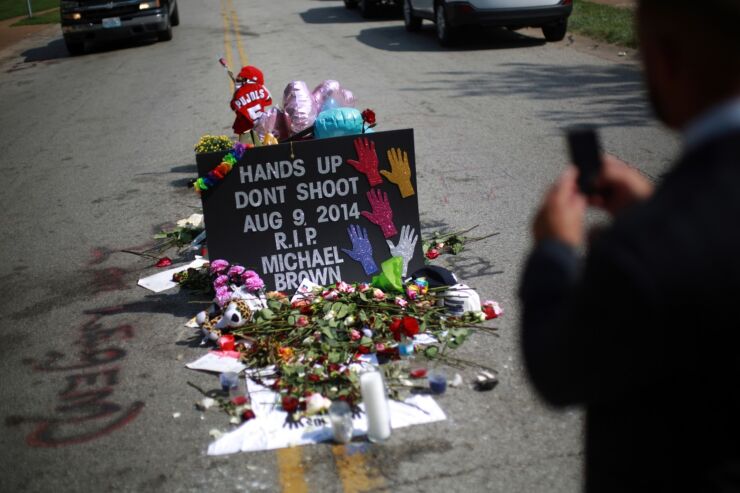Ferguson, Missouri, won back an investment grade rating from Moody’s Investors Service six years after losing it over fiscal strains created after a white city police officer shot a Black man to death in 2014 and spurred weeks of protests and unrest.
Moody’s Wednesday lifted the city's issuer rating into investment grade territory of Baa3 with a stable outlook.
Moody’s had

“The Baa3 issuer rating reflects stable financial performance and maintenance of healthy operating reserves coupled with incremental progress and implementation of the Department of Justice consent decree, a key governance consideration of the rating,” Moody’s said.
Ferguson's outstanding rated bonds remain at junk because their structure notches them below the issuer rating in Moody's methodology.
“The city refunded out of the Moody’s rated general obligation bonds,” so “the assigned issuer rating represents a hypothetical general obligation unlimited tax rating,” said lead Ferguson analyst Ken Surgenor. The city had $6.7 million of GO debt when it was cut to junk.
Earlier this year, Ferguson refunded its $4.5 million of GO bonds in a
Moody’s raised lease appropriation debt that is notched off the GO/issuer rating for essential purposes up to Ba1 from Ba2 and similar debt for less essential purposes to Ba2 from Ba3. The city had about $6.5 million outstanding in two COP series as of June 20, 2020, according to its audited financials.
The Baa3 issuer rating marks a one-notch upgrade from the previous GO rating affirmed last year at Ba1 with a positive outlook, which is now stable at the new higher rating.
“The stable outlook reflects management's commitment to continued progress toward substantial completion of the consent decree and mitigation of factors that led to the civil unrest in 2014,” Moody’s said.
The city’s below-average economic profile, stagnant and limited tax base and a weak demographic trend of declining population hold down the rating and it incorporates the city's reliance on economically sensitive sales tax revenue and manageable fixed costs comprised of average debt and below average pension burdens.
Ferguson, about 13 miles northwest of St. Louis and home to 18,500, entered the national spotlight after Brown's killing. The shooting sparked widespread protests and unrest and prompted a Justice Department patterns and practice probe of police tactics and the city's reliance on court fines to prop up its budget. A grand jury later that year in November declined to indict the officer, who resigned.
The city's once-plentiful reserves began dwindling and it appeared headed toward possible insolvency as soon as 2017, Moody's said at the time it sent the rating to junk.
The 2016 consent decree resulted from the DOJ] probe triggered by the shooting. In addition to attacking policing tactics, federal investigators concluded Ferguson's focus on generating revenue over public safety, together with racial bias, led to illegal practices.
The city slipped further into junk landing at Ba3 in the
The tide began to turn in 2017 when the
The city operates on a roughly $16 million budget. A small deficit in 2020 was offset by CARES Act coronavirus relief funding with modest surpluses expected through this year.
Under pressure to speed up progress on the mandates, the city hired a consent decree coordinator in 2019 and expects to complete the data collection protocol outlined in the consent decree this year with “substantial completion” designation targeted for this year. A two-year compliance period would follow.
In 2015, then Gov. Jay Nixon
City officials could not immediately be reached to comment on the upgrade and status of the consent decree and whether they have any borrowing plans.





